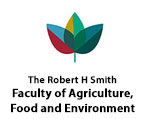Citation:
Date Published:
APR 16Abstract:
BackgroundGenetic sex ratio distorters are systems aimed at effecting a bias in the reproductive sex ratio of a population and could be applied for the area-wide control of sexually reproducing insects that vector disease or disrupt agricultural production. One example of such a system leading to male bias is X-shredding, an approach that interferes with the transmission of the X-chromosome by inducing multiple DNA double-strand breaks during male meiosis. Endonucleases targeting the X-chromosome and whose activity is restricted to male gametogenesis have recently been pioneered as a means to engineer such traits.ResultsHere, we enabled endogenous CRISPR/Cas9 and CRISPR/Cas12a activity during spermatogenesis of the Mediterranean fruit fly Ceratitis capitata, a worldwide agricultural pest of extensive economic significance. In the absence of a chromosome-level assembly, we analysed long- and short-read genome sequencing data from males and females to identify two clusters of abundant and X-chromosome-specific sequence repeats. When targeted by gRNAs in conjunction with Cas9, cleavage of these repeats yielded a significant and consistent distortion of the sex ratio towards males in independent transgenic strains, while the combination of distinct distorters induced a strong bias (similar to 80%).ConclusionWe provide a first demonstration of CRISPR-based sex distortion towards male bias in a non-model organism, the global pest insect Ceratitis capitata. Although the sex ratio bias reached in our study would require improvement, possibly through the generation and combination of additional transgenic lines, to result in a system with realistic applicability in the field, our results suggest that strains with characteristics suitable for field application can now be developed for a range of medically or agriculturally relevant insect species.

